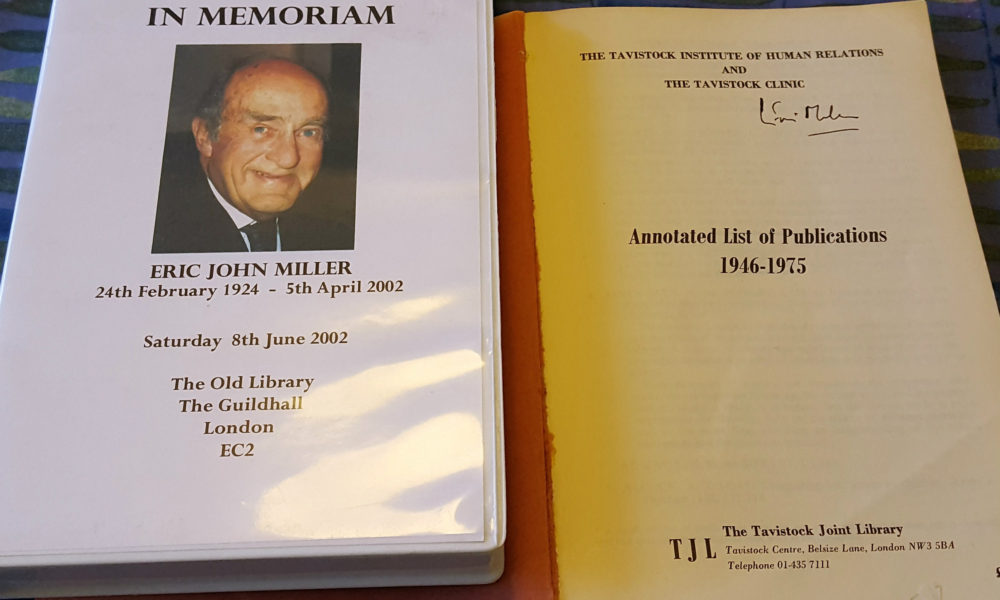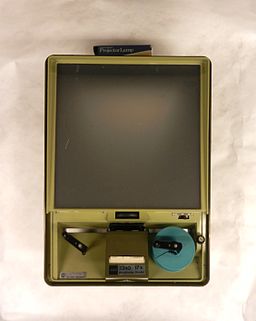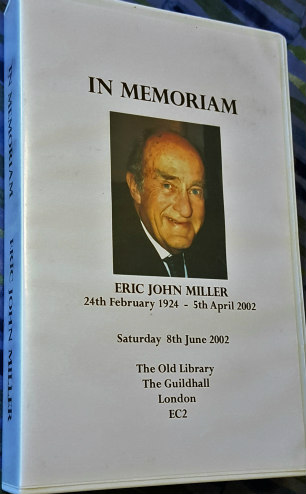
Writing Without TIHR Archives
Post by Dr Jean Neumann, Professional Partner, Senior Fellow in Scholarly Practice, TIHR
Only after I committed to writing the chapter did I remember that TIHR’s archives would be unavailable to me. I had been invited to contribute to a book about people the editors considered “great change thinkers”. I noted that Kurt Lewin, Eric Trist and Fred Emery were claimed already on an initial list of possibilities. I proposed successfully to lead on a chapter about Eric Miller, with colleague, Antonio Sama, leading on one about A. K. Rice.
In retrospect, my readiness to write the chapter came from a glowing memory of immersion in the TIHR archives while writing a historical article on “Kurt Lewin at The Tavistock Institute” (2005). Particularly, I had benefitted from using the in-house library that contained a microfiche reader. While the library held many TIHR publications, the microfiche box contained (on strips of negative film) microphotographs of papers, reports and correspondence as early as 1946.
 Image Credit: By Ross Griff from Bloomington-Normal, Illinois, USA (Portable Microfilm Reader) [CC BY 2.0 (http://creativecommons.org/licenses/by/2.0)], via Wikimedia Commons
Image Credit: By Ross Griff from Bloomington-Normal, Illinois, USA (Portable Microfilm Reader) [CC BY 2.0 (http://creativecommons.org/licenses/by/2.0)], via Wikimedia Commons
When Antonio and I met to explore the commonalities and differences between Miller and Rice, the lack of access to TIHR’s archives hit me. I experienced something akin to grief. I procrastinated for several weeks, unable to glean a way forward. How could I make sense of my extensive experience with Eric Miller as colleague of 16 years, and of Eric Miller as a “great change thinker” with a long and wide career coinciding with some of TIHR’s most respected streams of work? After Antonio suggested obituaries in UK newspapers as resource, I conducted my own meandering searches.
Piecemeal results from the internet jump-started me into gathering materials from my personal archive. Onto the sofa bed next to my office, I laid out books, articles and files by or about or somehow related to Eric. But that all important organising idea eluded me. I was frustrated by missing documents that I now felt were necessary, and worried how to incorporate arenas of Eric’s work about which I was aware but under informed. It became blindingly obvious that I needed to speak directly with Eric’s colleague and wife, Olya Khaleelee, and a couple of other colleagues (e.g. Lionel Stapley).
Through what can be called “oral history”, Olya Khaleelee offered me generous conversation, dialogue and a handful of items from her and Eric’s own library. Embarrassing but essential was her suggestion to look at Eric’s autobiographical preface in From Dependency to Autonomy: Studies in Organization and Change (1993): this book had been on my shelves and I had never read the preface. She loaned her video of Eric’s memorial service; talked me through book collections edited by others in Eric’s name, and importantly handed me something that I recognized from the TIHR archive.
This last item, an Annotated List of Publications: 1946-1975 for TIHR and the Tavistock Clinic, proved pivotal to my approach for writing about Eric Miller as a great change thinker. Once my memories and emotions stirred by watching the three hour In Memorial (2002) video, I was fired up to read Eric’s autobiographic reconstruction of his pre-TIHR days. This allowed me to craft a detailed consideration of his influences and motivations.

Having started the chapter by matching Eric’s dates with activities, it was probably inevitable that I would notice thematic patterns in his research and consultancy projects. That annotated list covered 1959-1975; it was necessary to use Eric’s own list (in From Dependency to Autonomy) for 1950-1993. Lionel Stapley and my own archive helped fill in blanks for 1993- 2002. Thus, I discerned an evolution of Eric’s key “change thinking” contributions by decades and themes, which made it possible to realize insights about his legacies and unfinished business.
Clearly, I relied heavily on my own and others’ oral histories and personal archives. Would the results of this writing process have been the same if TIHR’s microfiche reader and in-house library had been intact? I will never know; indeed, I am still awaiting feedback on the draft chapter. Suffice for now to say that I have a renewed appreciation for an accessible TIHR archive and look forward to its evolving availability!
Related
Latest Posts By TIHR Archive Project
- 07.12.21No Ostriches in the Sand
- 05.05.21#7 Social Dreaming Matrix: Covid-19 a year on. Notes from 29th April 21
- 04.16.21#5 Social Dreaming Matrix: Covid-19 a year on. Notes from 15th April 21
- 04.08.21#3 Social Dreaming Matrix: Covid-19 a year on. Notes from 1st April 21
- 03.31.21#2 Social Dreaming Matrix: Covid-19 a year on. Notes from 25th March 21